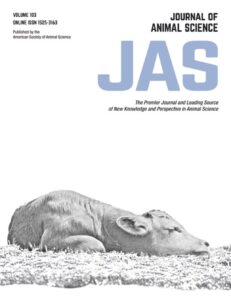Publications

PSII-17 Comparison of Woody Breast characteristics between commercial broilers and Korean Native Chickens using a non-invasive device
Authors: Ji-Won Kim, Da-Eun Han, Seong-Hwan Park, Dong-Hun Noh, Jung-U Choi, Eun-Jung Cho, Sang-Hyon Oh
Affiliations: Gyeongsang National University
Journal: Journal of Animal Science - October 2025, Volume 103, Issue 3, Pages 582-583 (DOI: 10.1093/jas/skaf300.659)
-
Field & Applications:
- Animal studies
- Musculoskeletal disorder
This study utilized the non-invasive MyotonPRO® device to quantify parameters associated with Woody Breast (WB) syndrome in commercial broilers and Korean Native Chickens (KNC).
Ross 308 (n=50), Arbor Acres (n=45), and KNC (n=41) were assessed for five WB measurement traits (Frequency, Stiffness, Decrement, Relaxation, and Creep) at 2, 4, 6, and 8 weeks of age. Meat quality parameters were also evaluated, including shear force, drip loss, cooking loss, and pH. Statistical analyses were performed using SAS 9.4 with repeated measures MIXED procedure and Pearson correlation analysis.
Statistically significant (p< 0.0001) differences between breeds were observed for all traits. KNC exhibited substantially higher average Stiffness values (769.10) compared to Ross 308 (247.06) and Arbor Acres (279.74), with dramatic differences at 2 weeks of age (KNC: 1909.99±23.04 vs. Ross 308: 314.82±20.77, Arbor Acres: 381.43±27.20). These marked differences may be related to KNC’s slower growth rate, possibly causing measurements at 2 weeks to be influenced by insufficient breast muscle development and proximity to the sternum. Frequency showed similar patterns, with significantly higher in 2-week-old KNC (107.87±1.22) than commercial broilers (Ross 308: 15.78±1.10, Arbor Acres: 17.89±14.44). Repeated measures analysis revealed that KNC showed very high values at 2 weeks, followed by a sharp decrease at 4 weeks and relatively stable values thereafter, while commercial broilers exhibited moderate changes. KNC showed substantially higher shear force values (17.65 N) compared to Ross 308 (1.55 N) and Arbor Acres (7.35 N). Drip loss values varied among breeds (Ross 308: 7.46%, Arbor Acres: 2.22%, KNC: 5.28%), as did cooking loss (Ross 308: 23.10%, Arbor Acres: 28.99%, KNC: 22.68%) and pH (Ross 308: 5.65, Arbor Acres: 6.02, KNC: 5.92). Correlation analysis identified significant relationships between shear force and pH (r≈-0.34, p<.0001) and between shear force and cooking loss (r≈0.35, p<.0001) in KNC.
These findings demonstrate distinct differences in muscle characteristics between KNC and commercial broilers, suggesting that genetic background and growth patterns influence traits related to WB occurrence. The high values observed in 2-week-old KNC should be interpreted considering anatomical differences resulting from varied muscle development rates. This study demonstrates that non-invasive measurements in live birds can effectively quantify WB-related traits, providing valuable data for genetic selection programs aimed at reducing WB incidence through selective breeding.
Keywords: woody breast, broilers, Korean Native Chicken, MyotonPRO®, non-invasive device


